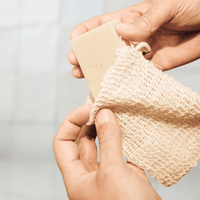
Happy World Water Day! Freshwater abundance is something we often take for granted. Next time you shower or run your clothes washing machine, take a moment to think about where your water comes from.
One of the primary sources of water is groundwater. It supplies half of the population in the U.S. with tap water used for drinking, faucets, toilets, showers and washing machines. On top of that, 50 billion gallons of water per day for agricultural needs. Irrigation accounts for 64 percent of our total groundwater use requirements followed by public and domestic use, and a variety of industrial uses.
One of the primary sources of water is groundwater. It supplies half of the population in the U.S. with tap water used for drinking, faucets, toilets, showers and washing machines. On top of that, 50 billion gallons of water per day for agricultural needs. Irrigation accounts for 64 percent of our total groundwater use requirements followed by public and domestic use, and a variety of industrial uses.
The problem is that our groundwater consumption rates are unsustainable. At the current rate of groundwater use, parts of Italy, California and India could entirely deplete their fresh groundwater stores by 2050.
What is groundwater depletion?
The U.S. is covered by a network of aquifers that store groundwater thanks to the unique geological makeup of each region. Aquifers are underground reserves of water that get stored between permeable sediment and rock.
The simplest analogy to conceptualize groundwater depletion is that we have a water debt with no credit card or savings account to draw from. In other words, we are using this source of freshwater faster than it can be replaced naturally. This debt is caused by sustained groundwater pumping.
What are the risks of groundwater depletion?
Water table level: Accessing the water supply gets more difficult as the water table drops. This is the level beneath the ground at which water will pool in wells.

Increased cost: Water becomes more costly to access, since pumping it consumes more energy.

Reduced above-ground water: Groundwater interacts with the rivers, lakes and streams above-ground by supplying them with stores of water seeping up from the ground. By pumping water excessively, we alter the natural flows and stores of surface water systems.

Ground surface collapse: When we remove too much aquifer water that fills the permeable crevices below the surface of the earth, it can cause the ground to collapse and sink. This “land subsidence” weakens engineered structures such as pipes, roads and foundations that cannot withstand such elevation shifts. In California, where drought and immense water needs for agricultural irrigation pose great water resource risks, the land sinks as much as half a meter each year.

Which parts of the U.S. are most impacted by groundwater depletion?
One of the areas of worst concern is the Ogallala aquifer. It supplies the irrigation canals of the high plains, known as the ‘breadbasket” of the country, and it supplies eight states in the midwestern region of the U.S. with water.
Parts of California, the Pacific Northwest, the Atlantic coast, the Gulf of Mexico, and the Southwest also face substantial groundwater depletion.
How does contamination affect the groundwater supply?
In addition to extensive groundwater depletion, our groundwater supply can become polluted by a number of industrial processes. Here is a brief overview of some of these issues:


Microplastics: An emerging concern among scientists is the level of microplastics found in our environment, which can enter the groundwater supply. Currently, 90 percent of bottled water and 90 percent of table salt contain microplastics. These alarming findings have people wondering what effect microplastics have on our overall health.


Nitrates: Agricultural fertilizer, livestock manure lagoons and even leaking septic tanks are filled with nitrates which pose a great contamination risk to the freshwater supply, as it can cause pregnant women and infants to suffer from methemoglobinemia, also known as blue baby syndrome.

Beauty products, cleaners and pharmaceuticals: The chemicals from these products pose considerable risks to groundwater contamination, as they introduce complicating factors for public health such as steroids or hormones into the drinking water supply. These chemicals can enter the groundwater supply from sources such as the sewage system or by leaching into the ground from landfills.

Fracking: The hydraulic fracturing process introduces toxic chemicals into the groundwater supply during the process of injecting high quantities of chemical-infused water into the ground. This pressures shale rock formations enough to form crevices that release natural gas, but the contaminated water can seep into groundwater sources.
What you can do to reduce negative impacts on freshwater supply?

Did you know that 1 pound of beef requires nearly 2,000 gallons of water to produce? This takes into account the water used to raise the grain it eats and the water used to clean the animal. A plant-based diet can greatly cut down on this water inefficiency.

You can do this! Take shorter showers, wash clothes less frequently, use tap water sparingly and perhaps most importantly: get rid of your lawn. We don’t need to mindlessly sprinkle water when environmentally friendly landscaping options are available.

The chemicals in your cosmetics and cleaners are not friendly to your water supply or the living species that live in rivers, lakes and streams. Do yourself and them a favor by exploring homemade or natural and biodegradable alternatives.

Remember that your pharmaceuticals, batteries, light-bulbs, paint and other common household items all pose a risk for groundwater contamination if they end up in the landfill. Identify the proper disposal outlets in your local community.

Water consumption and contamination often boils down to broad-ranging over-consumption issue we have in society. Scale it down in your personal life by eliminating plastic packaging where possible and buying things you plan to use for a long time to avoid unnecessary water consumption in the production process. Click here to shop our low-waste essentials!
Sources:





